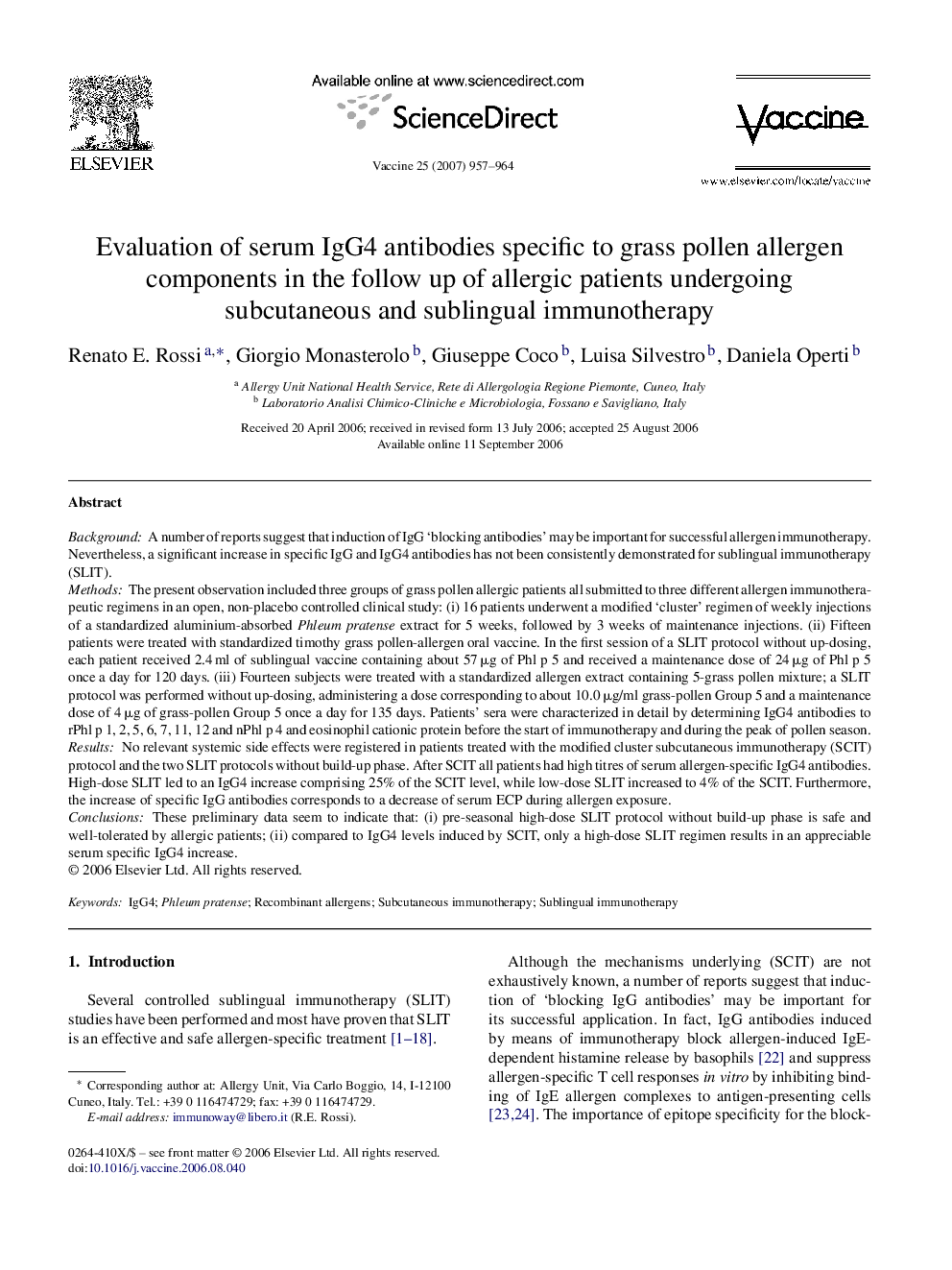| کد مقاله | کد نشریه | سال انتشار | مقاله انگلیسی | نسخه تمام متن |
|---|---|---|---|---|
| 2408848 | 1103192 | 2007 | 8 صفحه PDF | دانلود رایگان |

BackgroundA number of reports suggest that induction of IgG ‘blocking antibodies’ may be important for successful allergen immunotherapy. Nevertheless, a significant increase in specific IgG and IgG4 antibodies has not been consistently demonstrated for sublingual immunotherapy (SLIT).MethodsThe present observation included three groups of grass pollen allergic patients all submitted to three different allergen immunotherapeutic regimens in an open, non-placebo controlled clinical study: (i) 16 patients underwent a modified ‘cluster’ regimen of weekly injections of a standardized aluminium-absorbed Phleum pratense extract for 5 weeks, followed by 3 weeks of maintenance injections. (ii) Fifteen patients were treated with standardized timothy grass pollen-allergen oral vaccine. In the first session of a SLIT protocol without up-dosing, each patient received 2.4 ml of sublingual vaccine containing about 57 μg of Phl p 5 and received a maintenance dose of 24 μg of Phl p 5 once a day for 120 days. (iii) Fourteen subjects were treated with a standardized allergen extract containing 5-grass pollen mixture; a SLIT protocol was performed without up-dosing, administering a dose corresponding to about 10.0 μg/ml grass-pollen Group 5 and a maintenance dose of 4 μg of grass-pollen Group 5 once a day for 135 days. Patients’ sera were characterized in detail by determining IgG4 antibodies to rPhl p 1, 2, 5, 6, 7, 11, 12 and nPhl p 4 and eosinophil cationic protein before the start of immunotherapy and during the peak of pollen season.ResultsNo relevant systemic side effects were registered in patients treated with the modified cluster subcutaneous immunotherapy (SCIT) protocol and the two SLIT protocols without build-up phase. After SCIT all patients had high titres of serum allergen-specific IgG4 antibodies. High-dose SLIT led to an IgG4 increase comprising 25% of the SCIT level, while low-dose SLIT increased to 4% of the SCIT. Furthermore, the increase of specific IgG antibodies corresponds to a decrease of serum ECP during allergen exposure.ConclusionsThese preliminary data seem to indicate that: (i) pre-seasonal high-dose SLIT protocol without build-up phase is safe and well-tolerated by allergic patients; (ii) compared to IgG4 levels induced by SCIT, only a high-dose SLIT regimen results in an appreciable serum specific IgG4 increase.
Journal: Vaccine - Volume 25, Issue 5, 15 January 2007, Pages 957–964